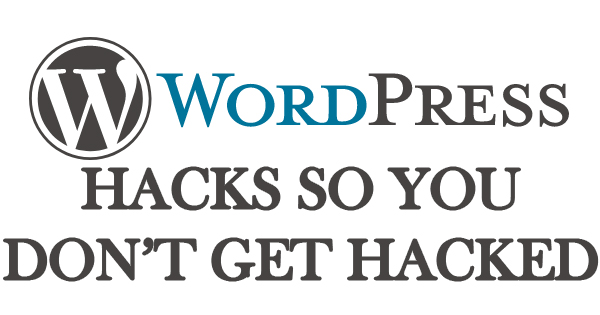
Released in 2003, WordPress has become the most popular blogging and website management system on the Internet today. Known primarily for blogging, WordPress has expanded to include use in website development. As of February 2017, over 60 million websites are WordPress based, and 27.5% of the top ten million websites in the world use this platform. As you may or may not know, the website you’re reading this post on right now was developed with WordPress. Roughly half of the websites I’ve designed and maintain use WordPress, as its popularity continues to increase. Clients enjoy the ease of which websites can be updated, and the fact that everything can be done online without the need for additional software. WordPress’ convenience comes at a price, however, as websites can be hacked if certain security measures aren’t taken. Today, we’ll tell you which steps to take so your blog or website doesn’t become a statistic.
First, a word about WordPress. At its core, WordPress is a free content management system (CMS). Users may choose pre-made themes (templates) that are either free or premium (or they can create their own), customize available options, download or purchase plugins for the functionality they’re looking for, and add their own text and images to create a website. Websites can be created with WordPress and saved and edited locally (on a computer and not online), hosted online by WordPress (https://wordpress.com/), or hosted by one’s own web host (https://wordpress.org/). Notice, if you’d like to develop a website and have WordPress put it online for you, you’d go to .com, whereas .org will allow you to download the software to your computer, yet it’s up to you to get the site online. The .com site allows you to build a site with an example.wordpress.com web address, while the .org site requires you to purchase a domain name and connect it to a web host. Most web hosts control panels allow for WordPress’ famous one-click installation to the domain of your choosing, making it very easy to get up and running.
As is the case with most programs, WordPress routinely releases updates to add new features and plug security vulnerabilities. Likewise, themes and plugins in use on a site will periodically need to be updated. It’s very important to keep your website up-to-date to help fend off potential hackers looking to bring your website to it’s knees and damage your online reputation. To perform these updates, log in to your administrative dashboard by going to yoursite.com/wp-admin, and then logging in with your user name and password. You do have a strong password, don’t you? Make sure that you do, and change it if you don’t! Your password should contain at least eight characters, with upper and lowercase letters, and/or numbers and symbols. After logging in, hover the mouse over “Dashboard” at the top left of the screen, and click on “Updates”. A list will appear of available WordPress, theme, and plugin updates. Click the “Select All” check box, and click “Update” and that task will be completed before you know it.
Updating is only half the battle when you’re a webmaster. It’s very important to have your website backed up in case the unthinkable happens. Many web hosts will regularly backup your websites, but I’ve never been one to leave things to chance. As is the case with most things in WordPress, you can manually backup your website, or you can have a plugin do it for you. I manually back up my sites via FTP software to my hard drive. After that, I’ll place a copy on a flash drive or external hard drive. What happens if the hard drive crashes? Backups need to be saved in multiple places. It’s a lot of work, but much less than it would be to recreate an entire site! If you’d prefer to leave it up to a plugin, in the adminstrative dashboard, click “Plugins” on the left, then “Add New” at the top of the screen. At the top right of the screen next to “Keyword”, type “backup” and a list of available plugins will appear. Click on any of the results for more information. When you’ve made your choice, click “Install Now”, then click “Activate”. The backup plugin will now be listed when you click on “Plugins”. You can repeat those same steps to search for any plugin you’d like to add to your site.
WordPress is extremely popular. It’s really no wonder with the simplicity and convenience it boasts. Unfortunately, because of this popularity, it’s become a target for hackers. With a little effort and foresight, however, you can rest easily knowing that your website is secure, and you’re prepared in case something does go wrong. Follow the hacks I’ve given you, and you won’t get hacked!
